Pamphlet handed out to all travelers:
Welcome, fair traveler to the land of the two moons. His Royal Highness, Heraclius Ajax IV, in his divine wisdom, has granted you passage through our Kingdom at your own leisure: so long as you follow our laws that is!
- If it is entertainment you seek, then you have come to the right place! Our cities are filled with many pleasures, both carnal and divine! Theatrical Performances, Opera, Folk Performances, Drinking, and dining, and divinations! You will never find yourself idle if you came for pleasure! The recommended stop for people as yourself ought to be our great capital of Novara. There, you will find all of the above, and even more! It is the most beautiful city in our realm and the Moonstone Palace is a wonder that you must see. We hold many festivals in our capital, often having many per month. Enjoy yourself there!
- If it is business you seek, you are also in luck, as we have quite the productive and active mercantile sector. Many of our coastal cities are hubs of commerce that bring us great wealth. The city you see is the Tripolis, at the mouth of the West Moona River. She is our main trading port, and many of you might find yourself there now!
- If you seek safe passage to other domains, such as Oiseau or the Republic of Zeta, you can feel assured that our roads are safe. We place great pride in stopping banditry and ensuring civility and peace.
- If you came for religious reasons, welcome home. The Twin Moons are a pilgrimage site for all worshippers of Moona, and even if you aren't one of us, you will become one of us by the way of the Moon.
Enjoy yourself, keep the peace and spread the love of Moona.
Kingdom of Deuxlunesia

Useful Overview and Information
State
Name: Kingdom of Deuxlunesia
Common Name: Deuxlunesia
Demonym: Lunesian
Official Language: Lunarisian
Secondary Language(s): Oiseaux, Zetans, Zvijezde (We do not accept Holoimperial as a legitimate language and condemn it as a relic of a dead empire.)
Primary Ethnic Group: Moonmen
Accepted Ethnic Groups: Oiseaux, Marsovci, Zetans
Capital: Novaria
Religion:Moonite
Ruling House
King: Heraclius Ajax IV
Queen Consort: Maria
Prince of the Moon: Archidamus
Royal House: Lunaris-Prometheus
Full Title: Heraclius Ajax, by Moona’s Grace, the King of Deuxlunesia and the Heavens above.
Government
Summary:
Feudal Parliamentary Monarchy, where the King is the chief executive, the Council of the Moon is the legislative and the Judicial branch is appointed by both branches, with the King taking precedence.
Feudal in name only, as the landed gentry are no longer responsible for the same tasks as they used to be and are used more as governors or Mayors. Many nobles have been Mediatised, retaining some of their rights and their rank but not their once feudal domain.
Law Code that prioritizes the rights of the defendant.
Details for Nerds:
The Kingdom is a feudal parliamentary state ruled from its capital of Novara. The executive branch of the government is held by the hereditary King or by his Regent should he be incapable of ruling. The King does not have absolute power over the various lords of the realm, but does hold much sway in how the nation is run if he chooses. The legislative branch of the government is run by the Council of the Moon, which are representatives of the various feudal lords and landowners of the nation. It is not uncommon for these lords themselves to sit in the place of their representative, but because their role also extends to being the governor and lord of their lands, it often prevents them. The Judicial Branch, by which the common law of the realm is upheld, is appointed by the Council but must be approved by the King. All people are innocent until proven guilty and may appeal to the King for amnesty.
On local levels, such as in cities, City Councils led by the local lord are modeled after the national government. Feudalism as a system has largely been abandoned on many levels, but rather reformed into "Lunar Feudalism", whereby the rights of the traditional feudal lords of the land have been changed to represent the modern times. Instead of being in charge of things such as raising levies for war, the feudal lords now are effectively governments of "provinces". While this system is not ideal, and further reforms to appoint higher regional authorities or centralize the government further have been proposed, this system is the basis currently.
Bureaucracy has grown greatly over the last century, and one of the major changes was the establishment of national taxation, national infrastructure and professional military structures. The local lords are restricted in their taxation of their subjects, and instead repaid on a national level based on population and relative income. This has led to tensions between the feudal lords and the central government.
Society, Culture and Religion
Societal Structure
Summary:
Patriarchal Society with clear gender roles
Clearly defined class system with very few ways to advance.
Slavery has replaced serfdom
Good Autonomy for the Marsovci
Attempts to change things have been quashed
Most of the population by far lives in rural regions
Details for Nerds:
Lunesian society is a bastion of conservatism, ancient rights, and tradition. This is clearly reflected in the class structure, and societal structure.
Gender roles in Deuxlunesia are clearly defined: The men do the hard labor, the fighting and the leading, while women do the housekeeping, breeding, and nurturing of the youth. These ideals are not only custom, but reflected legally as well, with women being under the care of first their fathers, then their husbands, and if unfortunately, by the state itself which takes care to protect its widows and single mothers. In the nobility, things are a little more hazy with many noble women playing an important role as patrons of the arts, the poor and needy, and freely offer advice to their husbands. While some outsiders have claimed that this system oppresses women, this is far from the truth as it is widely believed that women need protection and guidance.

Advancing within Lunesian society is rather hard because of how it is ordered. Most peasants will never become nothing more than that in their lives, unless they are fortunate or wise enough as entrepreneurs. But in classes above the lowest, such as the military, landed, and merchant class, abilities can translate into greater status in the future. It’s mostly a matter of ability.
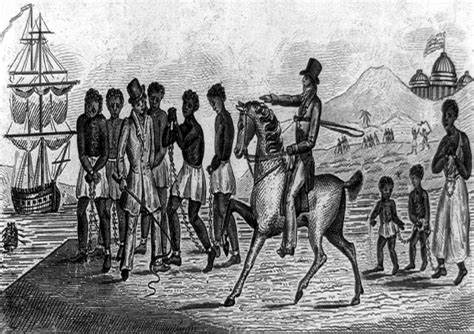
Serfdom was abolished in Deuxlunesia in 1034 after the Great Peasant Revolt of the previous 5 years, and the greater profit that came from slavery. As a result, most of the serfs have either translated their experience as farmers into becoming small homesteaders and planters. They represent a large amount of the population, and with advancements in farming technology, their freedom has started to translate into much better lives than before.
That being said, there are some that wish to have more rights and there have been several attempts at further reforming society into a more democratic one where the lords have less sway. Concepts such as a House for the Commoners grew greatly in popularity, but all of these ideals have been crushed by the army and the legislative body. In the future, an ambitious monarch may use this to gain more power at the hands of the peasantry, but as things stand, this is not going to happen.
The one most interesting part of society is that of the mysterious Marsovci people, which worship Iofi from the ID pantheon. They are granted good autonomy within their region and are largely their own society.
Culture
Summary:
Refined Noble and Burgher Culture contrasting with the growing love of Folk culture and the mixing of them in what is known as “Refined Folk”
Romanticism
Idyllic Agrarian lifestyle
Details for Nerds:
Lunesian culture is going through an interesting shift in recent years. The traditional noble and burgher culture, modeled largely off Oiseau tastes is seen most greatly within the cities, where the long association is splendidly displayed in architecture, the fine arts, and the mannerisms of the “city folk”. Grand Operas, Dance Halls, Theatres, Art Galleries, and Universities are the centerpieces of this “High Culture” that has little unique with the nation itself and represents the common culture that many elites hold around the globe.

But with the rise of romanticism, and the growing idealism around the folk culture native to the Lunesians is certainly starting to erode away at this pretentiousness of the past, and turn it towards a more unique vision. The movement, which seeks to establish a “Folk Gentry” culture has gained much credibility and influence in recent years among the young noblemen and even with the Crown Prince. They are known as the “Gentleman and Knights of the Moon” or simply “The Knights”, in many ways iit is more of a modern form of the Chivalric culture that existed centuries ago.

The Knights lean on the romanticism of the simple and pious agrarian life, against the sinfully decadent city life. Abandoning the powderwigs in favor of their natural hair, and wearing clothes much more suited to country life, they stand out greatly against the poofy, pretentious men and women of the older generations.
They also have adapted their own code of chivalry, which is also a call back to the “good old days” and embraces the same ideals that many of the poor farmers currently have: Hospitality, graciousness, and humility towards all. While their elders would be content degrading the peasantry, it is not unknown to find a Knight exchanging pleasantries and even eating with the commoners. They also speak in a tongue that mixes the aristocratic tone of their ancestors with the tongue of the common people. They also are modeled more after the landed gentry of lesser class too, who already have adopted this sort of culture but not in the same manner.

While many may not understand their actions, the truth is that the lifestyle which they harken back to and their combination of the folk and aristocratic culture is of natural appeal. For the folk culture of the Kingdom is undergoing a renaissance of its own with the increasing wealth of the commoners at display in it.

Instruments known as uncouth to the snobby old men of the cities like the Fiddle, the banjo, the guitar and the harmonica have found a home in the folk music of the countryside. The dances under the moonlight with the twang of the moongrass music and the fellowship enjoyed has intertwined many of these small communities together deeply. As one newspaper editor said “There ain’t nothin’ like a Moona chested woman, home fried meals and some moonshine to lift your spirit up in the time of need.” To these people, the greatest way they can honor Moona is not by the fancy things of the city folk but the simple enjoyment of life, and the singing, dancing and soul that comes from it.
Notable habits displayed by the people
Moonmen can be quite odd from the perspective of outsides because of some of their habits, societal oddities and eccentricities.
One such example is regarding the ideal female form, which takes after Moona herself, being emphasized through female dresses but being uncouth to speak of in such a manner. Women will often try odd methods in order to achieve the ideal body while tightly lacing themselves and trying not to put on weight to avoid becoming fat.
Overall, sexuality is rather odd. As one outsider from Oiseau observed:
"The world knows all of how much the Treerrats love sexual intercourse, it seems that is all the talk about; But the Treerrats truly are not the horniest group of people that I have observed. No, this title goes to the Moonmen easily. Perhaps it is true that the Treerrats have more intercourse, but when it comes to the effort made into the act, how much it is truly desired, how much passion is put into it, and the lengths that are gone to partake in it; Moonmen are truly unmatched. This may shock many as Moonmen are known to be rather prudish and moralistic as a society but behind that veneer which is still very much real lies a society that revolves around sex and breeding. They go to such lengths to maintain their morality that many houses have secret rooms dedicated for the married couple to have long passionate intercourse in. I estimate that married couples have intercourse likely twice a day at minimum... It is notable also that breeding is held in such high esteem that most families seem to have over 8 children born to them at minimum. I know one family that had 16 children.
None of this is an exagerration, and all of this is very much true. Moonmen really really love sex and breeding, and both of the acts are considered to be the most sacred acts. Most Moonmen get married rather young to breed with their partners as much as possible, and it is extremely taboo for a Moonman to ever have relations outside of their own people and marraige as well. Indeed, it is a capital crime and regarded as one of the greatest sins because what it means is that you do not love Moona in your wife enough, or as a woman that you do not wish to become like Moona. It is unthinkable to most Moonmen to do either of these, as their devotion to Moona is too great. The funniest part of all of this is that talking in public about sex and breeding is extremely uncouth, but none of that changes how much passion, desire, and intensity the act itself is for Moonmen.
Religion
Headed by the Archbishop of Novaria, the Church of Moona is part of the holopantheon and holds many of the common beliefs that are associated with the Pantheon, particularly of the Indo branch of the Pantheon aside from the crazy Risuners. The Religious Calendar used by the Church and state has been imported from Hoshiyomia, and is based on Moon signs. As mentioned, the most holy site in the Moonan Church are the Two Moons, which for each believer must be visited once every 5 years in their life. The kissing of the Moons and the drinking of their water is an essential rite of purity and peace within the religion. Another, less common part of the Church is the drinking of "Moona's Water", harvested at the Pisciare river in the center of the "Body of Moona".
The use of images and icons is prevalent in the church, with the kissing of the breasts of Moona within these icons being part of the liturgy. All Churches face east where the moon rises and all services start during the night, when the moon rises into the sky.
Within the brushy shrubland and desert does exist an odd cult of Moonmen known as the “Mooners” have dedicated themselves to becoming like Moona in every way. They are totally cut off from civilization, but some outsiders record them as being nearly human forms of the goddess through their cult.
Geography
 Map of the Kingdom
Map of the Kingdom
Climatology
 Map of the Climate. Note that
Map of the Climate. Note that
Regions

Geology
Geologically, the Kingdom has rather good soil in its heartland and the east coast in general that is idyllic for the agrarian society of Deuxlunesia. In the west, there are great amounts of clay and laterite soils that are not good for farming but rather for industry. There are good deposits of Gold, Silver, copper, zinc, and lead found within the west coast and along the two mountainous regions.
Regions
 This map shows the regions of the Kingdom.
This map shows the regions of the Kingdom.
Economy
Deuxlunesia's economy, while not as wealthy and as diverse as many within the world, is still if nothing else average but still has advantages in some fields.
Agriculture
The central and southeastern regions of Upper and Lower Lunaria, Mystica, Galetea, Harpina and Cleocharia have always been considered to be the heartland of the Kingdom in just about every field, but especially agriculturally.

From these regions, the “King” of all products the Kingdom produces is made in great quantities: Cotton. King Cotton was introduced around 120 years ago, and blossomed into the most important single industry within the nation by far within 50 years thanks to the profits from the slave trade, improved farming techniques and the cotton gin. This golden goose continues to grow as time goes along, with more and more lands being dedicated to the planting of it and more and more demand arising from many nations around the world. King Cotton has effectively been the catalyst for the societal reforms, but also has grown to the point that it is the only thing that keeps the national trade deficit out of the red.
But Cotton is not the only crop planted here, indeed, the fertile soil provides many food crops for the small homesteaders to prosper from and fodder for the livestock industry. Many of them take solace in their current fates, of tilling the land and living the simple life away from the chaos of the cities.
The north with its climate is ideal for the growing of grapes and olives, and the north of Cleocharia, Antigenia and Dyssebia have much of the agriculture based on the growing of fruit and vegetables.
The hilly southern regions of Julia and Olympias are rather unimpressive agriculturally, with most of the local farming being subsistence, with a notable dairy industry existing as well.

The semi-arid and hot deserts of the west have rather rocky soil that is poor for farming, and most agriculture done here is simply pastoral.
Mining and Logging
The nation’s great mines come from the Julia and Oiseaux Mountain ranges in the south and north, where the aforementioned mining of Gold, Silver, copper, zinc, and lead is done. Iron mines can be found within Palmyra and most notably Marsovia, where practically all the nation's iron and coal deposits can be found. Mining is the backbone of the Marsovian economy, and the eccentric Marsovci people use it to their advantage internally.
For the people of Leuconthea and Dyssebeia, the logging industry is the backbone of their economy, with the great forests of their regions long providing timber for the Kingdom and growing in importance as time goes along. The replanting of trees has become a priority, with the threat of clearcutting completely destroying the local economy being clear.
Fishing
Fishing is present in all of the coastal regions, but is extremely important to the west, which needs it to survive. It is estimated that over 40 percent of people living in Mariana are in some way part of this industry.
Secondary Sector and Tertiary
There is a lack of industrialization like you would see in Oiseau, Tsukinode, and Lusitania within the Kingdom but artisans play a major role in the economy regardless, as their fine goods and products hold their weight on the international market. Fine glass, Jewelry and other luxury goods are produced in aplomb. They however, would never be able to compete with foreigners and the government carefully regulates trade products for this reason.
Nonetheless, as is mentioned, the Kingdom relies on trade greatly and without it, the economy itself would fall apart. King Cotton has allowed the nation to stay competitive and not go into major amounts of debt, and truly is the future of the economy. More and more Cotton will be produced to satisfy the global markets.
Infrastructure
A rather well maintained infrastructure network but disconnected infrastructure network exists within the Kingdom. There is no doubt that where it is at, it does a great job with trade and travel, but the issue is that it is largely found in more developed regions and lacks greatly in the “boonies”.
National Policies and Future
In recent years, the national government has tried to promote the secondary sector towards industrialization and have failed spectacularly and the reason is simply a national problem. There is a great antipathy towards industrialization and the growing romanticism of the agrarian life have impaired this policy and may continue to blunt efforts in this field for some time.

What is true is that the future of the nation relies on King Cotton and friendly trade relations with others. The population growth of the nation can no longer be maintained by the current food production and hasn’t for the past 30 years. Attempts to diversify the economy will prove troublesome, given the landowners dominance in local politics and the profit following in from King Cotton.
Armed Forces
The Armed Forces have been reformed from a feudal outdated force into a modern fighting force in the past 50 years through reforms. This was largely a result of the issues caused by Koboworshippers and raids from Koboniggers from the tribalistic south. This new military is largely focused on national defense, and one of the benefits from the partial abolition of serfdom was the establishment of a professional army, where the men that fight in it do it for a living.
Royal Lunar Army
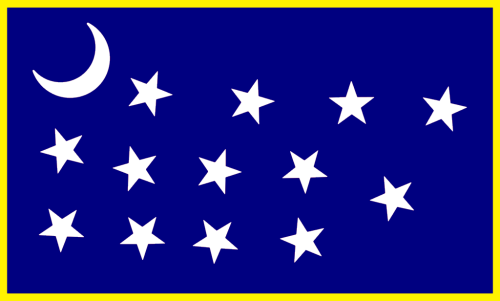
Organization and Numbers
Cadre of 50,000 Regulars augmented by 150,000 Reserves
In war, the army is organized into 6 Infantry Corps of around ~30,000 men each.
2 Cavalry Corps of ~10,000 horsemen are also raised.
In peace, there are no Corps, rather just army formations.
A further 200,000 men can be called up via conscription.
Infantry

There are around 43,000 Regular Infantry in peace.
Regular Infantry is highly trained in Neo-Pomeranian Tactics.
Reserve Infantry is expected to know the basics of these drills and in the event of war will be trained
Conscripts are in the event of an emergency threat and will be trained when they are raised to adequate standards
Organization
Infantry Corps are around ~30,000 men and are organized into 3 to 5 Divisions.
Infantry Divisions are organized into 2 to 4 brigades and around around 4000 to 8000 men. Attached to each division is a Rifle Regiment of around 500 to 800 marksmen.
Infantry Brigade consists of 2 to 3 Regiments and is around ~2000 men
Infantry Regiments consist of around 600 to 1200 men and are organized into 2 to 4 Battalions of 200 to 400 men each.
Infantry Battalion has 4 to 6 companies, one of which is a skirmisher company. Companies are around 50 to 80 men.
Cavalry
There are around 5,000 Regular Cavalrymen in peace.
Reserve Cavalry are far better trained than their infantry counterparts in peace thanks to their status and class.
Conscript Cavalry are in the event of an emergency threat and will be trained when they are raised to adequate standards
Organization
Cavalry Corps around 6,000 to 12,000 Horsemen strong and are divided into 3 to 6 Divisions
Cavalry Division is around 1,500 to 3,000 Horsemen strong and has 2 to 4 brigades.
Divisions are organized into either Heavy, Medium or Light Cavalry, which are effectively Cuirassiers, Dragoons and Hussars with the Heavy and Medium cavalry having effectively the same role while the Hussars are excellent at scouting and raiding.
Cavalry Brigade is around 600 to 900 horsemen strong and have 2 to 3 Regiments
Cavalry regiment is around 150 to 300 horsemen and have 3 squadrons
Cavalry Squadron is around 50 to 80 horsemen.
Artillery and Engineers

Artillery and Engineers make up the rest of the 2,000 men in the army and are all regulars in the event of war; with anyone being raised to these forces in the event of war having to meet the standard of the regulars.
Each Infantry Corps has an Engineer Battalion attached to it.
Artillery is concentrated mostly at corps level, with each division having one battery.
Doctrine and Tradition
As per the tradition, the army is centered around the spirit of the offensive and attack. In the event of an invasion, all forces are expected to concentrate if feasible to drive them off.
There is a strong cavalry culture that dates back to the beginning of the Kingdom some 1200 years ago.
Political and Social leanings
The Army as a whole are conservatives that are the strong arm of the state. Even the rank and file largely fit into this view. Joining the army is seen as a noble act and it is something that many young men wish to do.
Its officers are largely from mediatised nobles, and successful planters seeking to gain further prestige.
The Romanticism of war has played a large part in the army's current state politically and socially. Many of the Reserves actually are pseudo-paramilitary forces in their own right because of this and the desirability of glory from battle.
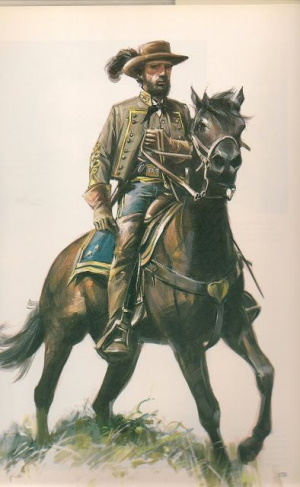
Royal Lunar Navy

The navy's main purpose is to simply protect local waters from foreign incursions, and to protect trade within the territorial waters of the nation. The Eastern and Western fleets are more than capable at accomplishing their task, and with the traditional good sailing qualities of the blank, the navy is more than capable of achieving its task against most foes.
Strategy
The fleet prides itself on the use of unorthodox tactics and strategies, and specializes in commerce raiding and night fighting.
In the event of war against a major naval power such as Moriji or the Tsukinode Empire, the navy would use several strategies to level the playing field.
The first of which is using their fast commerce raiders to target unescorted enemy trade vessels. Even the fast clippers wouldn’t be immune, as the commerce raiders are actually able to keep up with them and catch them with their excellent sailing characteristics. Blockade Running would also be a priority, and these raiders can also serve that purpose.
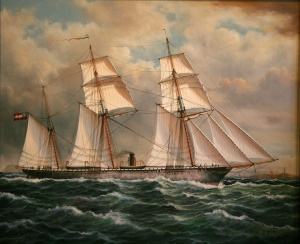
The second would be using the fleet’s superior night fighting combat techniques to launch attacks at night on blockading forces. The use of the subs during this would be critical, as their explosives can immobilize an enemy capital ship with one hit.

The overall goal of this is not to win, but to inflict enough losses and cause enough problems for the enemy that they would not be able to “win” the war without great cost.
Paramilitary Groups
The Kingdom does not recognize the actions of these groups nor their goals as part of their own nation and refuses to accept responsibility for their actions... However, the Kingdom secretly supports them in their efforts at expanding "business". Unlike the reservists, which are not really paramilitary forces, what are known as either "Regulators", "Liquidators" or "Filibusterers" are indeed paramilitary forces that in some ways are related to the nation itself.
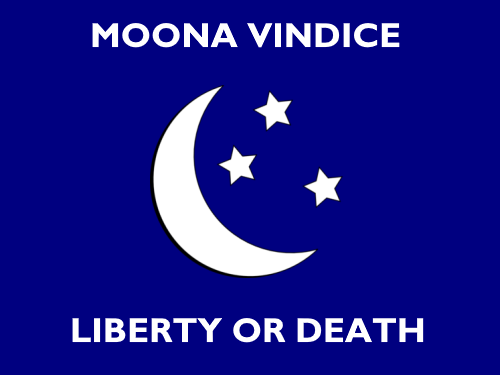
These groups have risen in recent years in efforts to expand the Cotton Empire to other lands of less civilized people, mainly to the south.